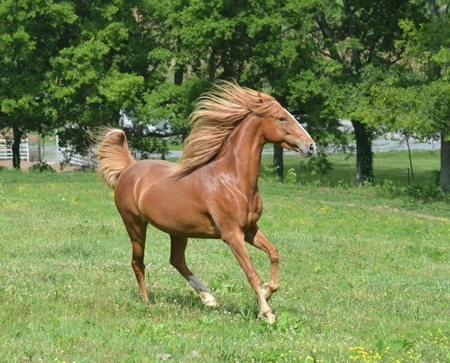Pictures of a Horse Biography
Source(Google.com)
Horses are large, fast-running mammals that live in family groups on grasslands. They eat grasses; they are nomadic herbivores. Racehorses can gallop at up to about 42 mph (68 kph) in short bursts in order to escape from predators. The horse's life span is about 20-35 years. Horses were first domesticated by people in Asia 5,000 to 6,000 years ago. There are about 200 domesticated (not wild) breeds of horses. The earliest-known horse is the tiny Eohippus (Hyracotherium).
Names: An adult female horse is called a mare, the adult male is called a stallion. A foal is a horse not yet one year old; a colt is a young male and a filly is a young female. A gelding is a sterilized male horse. A pony is a small horse, less than 58 inches (146 cm) tall at the shoulder. Horses are closely related to the zebra and donkey. Mules and hinnies are the offspring of donkeys and horses. The genus and species of the horse is Equus caballus.
Anatomy: Horses have hoofed feet (they are ungulates). The hooves and teeth continue to grow throughout the horse's life. Horses have a narrow, flowing mane. They have large nostrils that let them get lots of air quickly. Large eyes and ears help the horse detect predators early, allowing it to run away. The heaviest horse is the Belgian (up to 3,150 lb,1400 kg), a draft (working) horse; the tallest is the Percheron (7 ft tall), another draft horse. The lightest and smallest is the miniature horse, a type of pony.
Sleeping: Horses sleep standing up, but if they feel safe, they will sleep lying down.
The Guide Horse Foundation was founded in 1999 as an experimental program to access the abilities of miniature horses as assistance animals. There is a critical shortage of guide animals for the blind and guide horses are an appropriate assistance animal for thousands of visually impaired people in the USA.
In early experiments, Guide Horses have shown great promise as a mobility option, and people who have tried Guide Horses report that the Guide Horses perform exceptionally well at keeping their person safe. These friendly horses provide an experimental alternative mobility option for blind people. People who have tried Guide Horses report that the horses demonstrate excellent judgment and are not easily distracted by crowds and people.
Guide horses are not for everyone, but there is a strong demand for Guide Horses among blind horse lovers, those who are allergic to dogs, and those who want a guide animal with a longer lifespan.
An international Poll by the Discovery Channel showed that 27% of respondents would prefer a Guide Horse if they required a guide animal.
There are many compelling reasons to use miniature horses as guide animals. Horses are natural guide animals and have been guiding humans for centuries. In nature, horses have been shown to possess a natural guide instinct. When another horse goes blind in a herd, a sighted horse accepts responsibility for the welfare of the blind horse and guides it with the herd. With humans, many blind people ride horses in equestrian competitions. Some blind people ride alone on trails for many miles, completely relying on the horse to guide them safely to their destination. Through history, Cavalry horses have been known to guide their injured rider to safety. The Guide Horse Foundation finds several characteristics of horses that make them suitable to guide the blind:
Pictures of a Horse Images Wallpapers Photos 2013

Pictures of a Horse Images Wallpapers Photos 2013

Pictures of a Horse Images Wallpapers Photos 2013

Pictures of a Horse Images Wallpapers Photos 2013

Pictures of a Horse Images Wallpapers Photos 2013

Pictures of a Horse Images Wallpapers Photos 2013

Pictures of a Horse Images Wallpapers Photos 2013

Pictures of a Horse Images Wallpapers Photos 2013

Pictures of a Horse Images Wallpapers Photos 2013

Pictures of a Horse Images Wallpapers Photos 2013

Pictures of a Horse Images Wallpapers Photos 2013
No comments:
Post a Comment